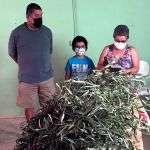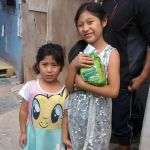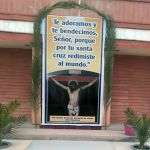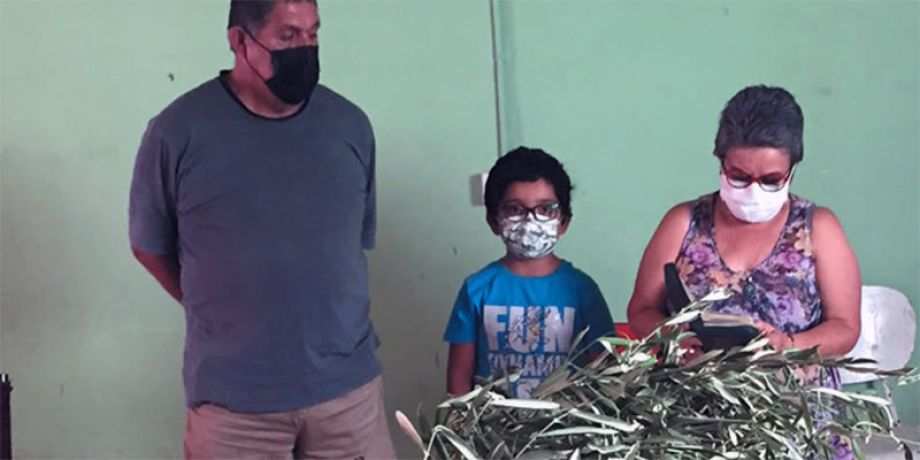
For Holy Week 2020, I found myself in Bellevue, Nebraska, where I found refuge in the U.S. headquarters of the Columban Fathers after my sabbatical program at the Oblate School of Theology in San Antonio, Texas, was cancelled because of the coronavirus pandemic. I joined my Columban companions celebrating the liturgical ceremonies of Holy Week together but without a congregation of the faithful. I was grateful to be with them, but I think that we all missed celebrating with the people of God!
 In November 2020, I was assigned to the Columban parish of the Sagrado Corazón de Jesús (Sacred Heart of Jesus) in a place called Alto Hospicio in the north of Chile. Alto Hospicio is located in the middle of the Atacama desert, the driest desert in the world. I was looking forward to celebrating Holy Week 2021 with the people of the parish. However, a sudden rise in the number of coronavirus infections sent us back into the quarantine lockdown. It came as an unwelcome surprise. The statistics, however, justified the strict measures. Despite a successful vaccination campaign with over seven million people vaccinated, the number of cases increased dramatically. The number of new cases over several days reached record high totals, and the intensive care units were filled to 95% capacity. The government limited the number of persons permitted at religious ceremonies to five people. Our bishop, Monseñor Guillermo Vera, decided that we would have to find other creative ways to celebrate with as many parishioners of our parishes as possible.
In November 2020, I was assigned to the Columban parish of the Sagrado Corazón de Jesús (Sacred Heart of Jesus) in a place called Alto Hospicio in the north of Chile. Alto Hospicio is located in the middle of the Atacama desert, the driest desert in the world. I was looking forward to celebrating Holy Week 2021 with the people of the parish. However, a sudden rise in the number of coronavirus infections sent us back into the quarantine lockdown. It came as an unwelcome surprise. The statistics, however, justified the strict measures. Despite a successful vaccination campaign with over seven million people vaccinated, the number of cases increased dramatically. The number of new cases over several days reached record high totals, and the intensive care units were filled to 95% capacity. The government limited the number of persons permitted at religious ceremonies to five people. Our bishop, Monseñor Guillermo Vera, decided that we would have to find other creative ways to celebrate with as many parishioners of our parishes as possible.
he first reaction of our parishioners was one of disappointment. Many people expressed their need to celebrate in person Holy Week. We soon realized that we would have to find creative ways of celebrating together and that is just what we did! Traditionally, Palm Sunday is the day when most Catholics in Chile come to Mass. There is a belief that a ramito (a gathering of palm branches) placed above the front door of the house will protect the occupants if there is an earthquake. A typical ramito includes branches of palm, olive and romero. However, I wondered where in the desert would we get a sufficient amount of tree branches? As it turned out, the pastoral agents in our four chapels were able to gather more than enough branches. The ramitos from the chapel of Sagrado Corazón de Jesús came from trees planted by Columban Father Tom Hanley and the coordinator of the chapel, Jorge Mendoza. Armed with special permission given to priests and ministers to go out, I went to the four chapels and blessed the ramitos.
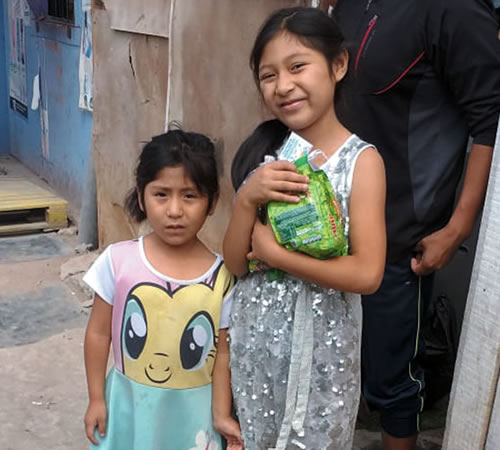 TI also wondered how we were going to get the ramitos to our parishoners? We came up with the solution: “Holy Week Delivery Service.” The pandemic restrictions permit supermarkets and restaurants to deliver food, so we decided to deliver the ramitos to the people. With Jorge Mendoza and his wife, Monica Escalante, we delivered more than 80 ramitos. The other chapels did the same. Over four hundred families received a ramito.
TI also wondered how we were going to get the ramitos to our parishoners? We came up with the solution: “Holy Week Delivery Service.” The pandemic restrictions permit supermarkets and restaurants to deliver food, so we decided to deliver the ramitos to the people. With Jorge Mendoza and his wife, Monica Escalante, we delivered more than 80 ramitos. The other chapels did the same. Over four hundred families received a ramito.
Our parish includes fourteen tomas, squatter camps with makeshift housing. The majority of the residents are immigrants from Perú, Bolivia, Colombia and Venezuela. In Santiago, such areas are called campamentos (camping sites). For the past eight years, the parish has maintained a soup kitchen for the families of the tomas. Unfortunately, it had to be closed because of restrictions during the pandemic. However, the parish continues to distribute food parcels to many families in the tomas. I went with Jorge and Monica to one of the largest called “Toma Santa María” built over a garbage landfill. Monica and Jorge are well known by the families who received gratefully both the food parcel and a blessed ramito. They would return on Easter Sunday morning with chocolate Easter eggs for the children.
Holy Thursday presented a special problem for us. With a curfew imposed, we realized that we could not repeat our delivery service and distribute Communion to all those who might want to receive the Sacrament. I celebrated the Lord’s Supper with three Mexican missionary Sisters who belong to the Corde Jesu congregation. We were able to share the celebration using Zoom so that people could participate in the shared homily and offer their own prayers in the Prayer of the Faithful.
 Our preparations for Good Friday began when we put up two gigantografías (banners measuring thirteen feet in height and six and a half feet in width) in front of two chapels. The banners showed the Crucified Christ with the caption of the familiar words of the Stations of the Cross: “We adore you and we bless you, O Lord, because by your Holy Cross you have redeemed the world.” As people drive by or walk to their homes, the banners would remind them that we would soon celebrate Good Friday. On Good Friday morning, I gave a short retreat on the Seven Last Words of the Lord on the Cross and again we used Zoom to share it with as many people who would be interested. The viewers participated by reading the passages from the Gospels and sharing their own reflections.
Our preparations for Good Friday began when we put up two gigantografías (banners measuring thirteen feet in height and six and a half feet in width) in front of two chapels. The banners showed the Crucified Christ with the caption of the familiar words of the Stations of the Cross: “We adore you and we bless you, O Lord, because by your Holy Cross you have redeemed the world.” As people drive by or walk to their homes, the banners would remind them that we would soon celebrate Good Friday. On Good Friday morning, I gave a short retreat on the Seven Last Words of the Lord on the Cross and again we used Zoom to share it with as many people who would be interested. The viewers participated by reading the passages from the Gospels and sharing their own reflections.
The community of the chapel of St. Theresa de los Andes organized the Stations of the Cross online. The families built crosses which in some cases included masks to prevent coronavirus! In the afternoon, once more using Zoom, we celebrated the Liturgy of the Passion of the Lord.
During the times that Alto Hospicio has been quarantined, we have transmitted the celebration of Sunday Mass on Facebook Live. So it was obvious that was the best way to transmit the Paschal Vigil to our parishoners. But we weren’t the only game in town! Many parishioners watched Paschal Vigil liturgy presided by Monseñor Vera. All during Holy Week my cellular phone was flooded with messages, videos and reflections on Whatsapp.
I may have been disappointed with not being able to celebrate Holy Week in person with our parishioners, but I could rejoice in the creativity of our parishioners who found new ways to celebrate the most important events of our faith.
Columban Fr. Michael Hoban lives and works in Chile.
